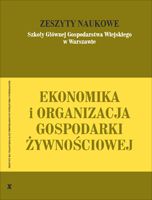Prospects for Migration of Workers from Candidate Countries to the European Union
Main Article Content
Abstract
The reasons for workers' migration resulting from personal features of a worker as well as from general political and economic situation both in the worker' s home country and in the host country were discussed in the paper. As regards to movement of workers between the candidate countries and the Member States, the economic factors seem to be of a key importance. They include differences in macroeconomic situation between states, income disparities and demand-supply relationship on certain labour markets. According to migration predictions presented in the study, the EU' immigration from all candidate Central and Eastern European countries should reach the level of 335 thousands of persons in the first year of accession. The outlook for year 2030 shows, that total number of immigrants from ten CEECs remaining residents in present Member States would achieve about 3.9 million of persons. It means that their percentage in the EU population would increase from 0.2 per cent at present to 1.1 per cent in 2030. Basing on the experience of earlier enlargements of the EU, the opinion polls within potential immigrants, studies, reports and forecasts worked out by research institutes, we can conclude that setting the EU labour markets free for nationals of the candidate countries would not cause the mass labour migration from CEECs.
Article Details
How to Cite
Krawczyk, E., & Albin, J. (2002). Prospects for Migration of Workers from Candidate Countries to the European Union. Zeszyty Naukowe SGGW - Ekonomika I Organizacja Gospodarki Żywnościowej, (47), 53–65. https://doi.org/10.22630/EIOGZ.2002.47.21
References
GŁĄBICKA K., 1999: Rynek pracy w Unii Europejskiej, Stan i perspektywy. Difin, Warszawa.
GREWIŃSKI M., MALINOWSKI K., 1999: Europejski fundusz socjalny i rynek pracy w Unii Europejskiej. Elipsa, Warszawa.
GUEGUEN D., 1998: A practical guide to the EC Labyrinth - structures, powers and procedures. Editions Apogee, Bruksela.
HERMA C., 2001: Swobodny przepływ osób - wybrane stanowiska rządów, grup nacisku, instytucji w państwach członkowskich UE. Biuletyn Analiz UKIE, nr 5.
Statistics
Downloads
Download data is not yet available.
Recommend Articles
Most read articles by the same author(s)
- Ewa Krawczyk, Joanna Wrzesińska, The Use of Sensitiveness Analysis to the Effectiveness’ Risk of Building and Implementation of the Cadastre Communications System , Zeszyty Naukowe SGGW - Ekonomika i Organizacja Gospodarki Żywnościowej: No. 74 (2009)
- Ewa Krawczyk, Profitability and Riskiness of Investment in Securities on the Sample of Chosen Portfolio , Zeszyty Naukowe SGGW - Ekonomika i Organizacja Gospodarki Żywnościowej: No. 45 (2001)
- Ewa Krawczyk, Using Value at Risk (VaR) Model Based on Monte Carlo Method on Property Market , Zeszyty Naukowe SGGW - Ekonomika i Organizacja Gospodarki Żywnościowej: No. 58 (2006)
- Ewa Krawczyk, The Development of Future Contracts Market at the Warsaw Stock Exchange in Warsaw , Zeszyty Naukowe SGGW - Ekonomika i Organizacja Gospodarki Żywnościowej: No. 54 (2004)
- Ewa Krawczyk, Application of Covariance Method for Risk Assessing on the Commercial Real Estate Market , Zeszyty Naukowe SGGW - Ekonomika i Organizacja Gospodarki Żywnościowej: No. 55 (2005)
- Ewa Krawczyk, Costs of Building and Operating the Real Estate Integrated Information System , Zeszyty Naukowe SGGW - Ekonomika i Organizacja Gospodarki Żywnościowej: No. 57 (2005)
- Ewa Krawczyk, Position of Warsaw Stock Exchange among Chosen Stock Exchanges of Central Europe , Zeszyty Naukowe SGGW - Ekonomika i Organizacja Gospodarki Żywnościowej: No. 72 (2008)
- Ewa Krawczyk, The Structure of the Integrated Cadastral System in Poland , Zeszyty Naukowe SGGW - Ekonomika i Organizacja Gospodarki Żywnościowej: No. 51 (2003)
- Ewa Krawczyk, Working Capital and Financial Liquidity in Selected Meat-Processing Companies Listed on Stock Exchange , Zeszyty Naukowe SGGW - Ekonomika i Organizacja Gospodarki Żywnościowej: No. 36 (1999)
- Ewa Krawczyk, The use of Hedging against Risk of Exchange Rate Changes in Futures Quoted on the Warsaw Commodity Exchange , Zeszyty Naukowe SGGW - Ekonomika i Organizacja Gospodarki Żywnościowej: No. 62 (2007)





